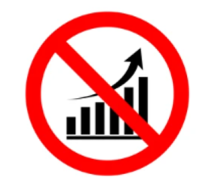The market turmoil that resulted from last week’s tariff announcements by US President Donald Trump has reportedly caused about $10 trillion in wealth destruction — with half allegedly vanishing in just 48 hours.
While these assertions reflect the severity of the situation, a closer look reveals that some details are exaggerated or lack verification.
According to Dow Jones magazine, Barron’s, American stock markets saw a sharp downturn, with the S&P 500 falling approximately 14% over three trading days, wiping out more than $6 trillion in market capitalisation.
Although this is a staggering figure, it falls short of the $10 trillion cited in some reports in which Trump’s tariffs were blamed for leading to the worst 48-hour loss of wealth in US history.
Comparisons have been drawn to Black Monday in 1987, when the Dow Jones Industrial Average plummeted by over 22% in a single day.
In response to escalating trade tensions, JPMorgan Chase has revised its economic forecasts.
According to US News & World Report, the investment bank recently raised the probability of a US recession by the end of 2025 to 35%, up from 25% earlier in the year.
While significant, this update does not match the 60% probability cited in some news sources.
However, University of Pennsylvania professor of finance Jeremy Siegel has apparently said that Trump’s tariff rollout was “the worst economic policy decision in 95 years”.
Former hedge fund manager and markets presenter at CNBC, Jim Cramer, warned of a potential “Black Monday”-style collapse due to Trump’s tariffs, cautioning that market reaction could rival the infamous 1987 crash.













